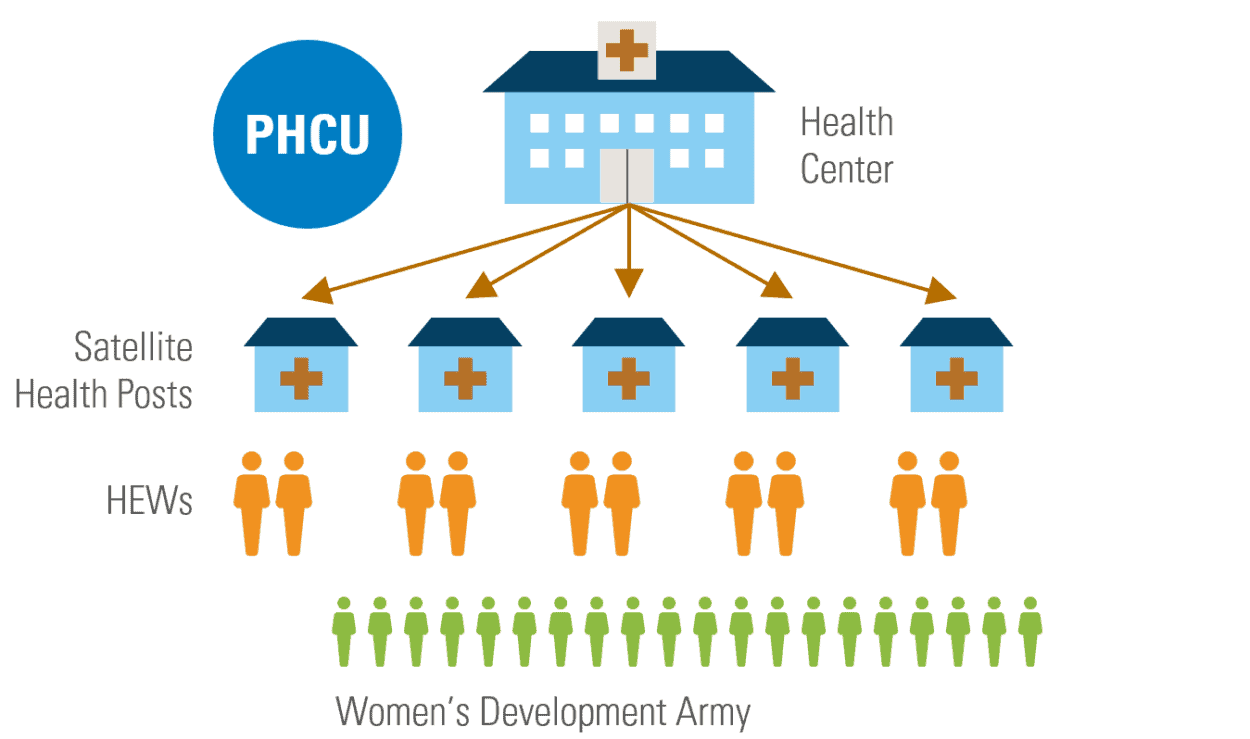This website uses cookies so that we can provide you with the best user experience possible. Cookie information is stored in your browser and performs functions such as recognizing you when you return to our website and helping our team to understand which sections of the website you find most interesting and useful.
Learnings from a Stratified-Pair, Cluster-Randomized Field Study

In Ethiopia, the national family planning program has made significant strides in providing access to services in the country. The contraceptive prevalence rate (CPR) jumped in the last two decades. This increase in CPR has mainly been a result of a sharp increase in the use of injectable contraceptive methods.
But contraceptive discontinuation rate within 12 months of uptake is 35%, and 38% among injectable users, which may threaten women’s fertility intentions.


The Ethiopian health system, which provides services to 84% of the family planning users, is is paying the price of high contraceptive discontinuation rates in the country.
.
Behavioral economics (BE) can inform strategies to change health-related behaviors and decision-making.
JSI’s Last Ten Kilometers Project (L10K) 2020 and ideas42 worked with Ethiopia’s flagship Health Extension Program (HEP) to design and test behavioral approaches to mitigate the discontinuation of injectable contraceptives.


Two Health Extension Workers (HEWs) at each satellite health post provide basic health including family planning services to 5,000 people with the support of the Women’s Development Army volunteers.
.
METHODOLOGY
The study utilized the four stages of behavioral design methodology.

STAGE I | Problem Definition

STAGE II | Behavioral Diagnosis
The design team used desk reviews, conversations with stakeholders, and behavioral economics insights to generate these behavioral hypotheses (bottlenecks) for injectable discontinuation:
Passive Discontinuation

Active Discontinuation

Provider Discontinuation

STAGE III | Intervention Design
[1] Interventions proposed based on Stage II
[2] Feasibility and acceptability assessed
[3] Preliminary tools designed
[4] End user testing of tools
[5] Final package of interventions (3 tools)

STAGE IV | Testing

STUDY DESIGN
Stratified-pair, cluster-randomized field study

STUDY IMPLEMENTATION
Two-day training developed and provided to 74 people in the intervention area; control area HEWs oriented on FP client record keeping; quarterly supportive supervision visits and six monthly performance review meetings

STUDY PARTICIPANTS
Between February and November 2016, women of reproductive age initiated using injectable contraceptives 1) for the first time; 2) after 6 months of break, or 3) switched to injectables from another FP method of contraception

SAMPLE SIZE
Powered at 80% with 95% confidence interval to detect 14%-point reduction in injectable discontinuation rate, assuming design effect 2

DATA COLLECTION
Study area health posts visited in October 2017 to assess intervention fidelity; women who visited the study area health posts to obtain injectable contraceptives during the enrollment period were visited at their households in December 2017, and the consenting eligible women were interviewed

ANALYSIS
Intervention effects were adjusted for study design, participants’ background characteristics, and health systems’ performance indicators of the health posts under study
“The card contains enough information that enables anyone to provide service by only looking at the card, unlike the previously used cards that contained only limited information.”
HEW from Adelagata HP
RESULTS




CONCLUSIONS
BIAS
The study could be biased due to the differential in the loss to follow-up between the study arms and due to unmeasured confounders.
TOOL UPTAKE
The appointment card and client care checklist fit well within the HEWs’ workflow, thus are consistently used. Although the usefulness of the planning calendar was appreciated by the HEWs, maintaining it was a duplication of some of their recordkeeping efforts, thus it was not consistently used.
EFFECTS
Injectable contraceptive discontinuation rate was comparatively lower in the BE intervention area, indicating the effectiveness of the BE approach. Intervention effects were likely due to the introduction of the suite of tools.
LOOKING FORWARD
BE is a promising approach to ‘nudge’ supply and demand side behavioral factors to improve injectable contraceptive use.

